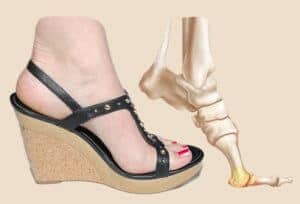Ball of Foot Pain

Ball of Foot Pain
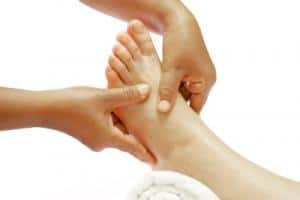 Metatarsalgia
Metatarsalgia
Pain and inflammation felt in the ball of the foot is referred to as Metatarsalgia. Having the incorrect shoes is the most common cause, but may be caused by vigorous activity.
To treat it:
- Take pain relievers such as NSAIDs
- Ice and rest
- Wear comfortable and supportive shoes
- Try shoe inserts to relieve pressure on the balls of your feet
Mortona Neuroma
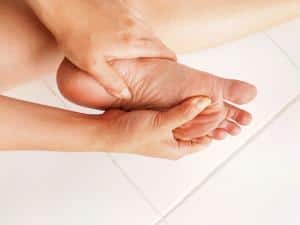 Morton’s neuroma is a thickening of the tissue around nerves between the bases of the toes. Common symptoms are pain, unusual sensations, and numbness over the balls of the feet. It can be caused by wearing high heels or tight shoes. It most commonly occurs between the 3rd and 4th toes.
Morton’s neuroma is a thickening of the tissue around nerves between the bases of the toes. Common symptoms are pain, unusual sensations, and numbness over the balls of the feet. It can be caused by wearing high heels or tight shoes. It most commonly occurs between the 3rd and 4th toes.
To treat it:
- Wear shoe inserts to reduce pressure on the nerve.
- Ask your doctor about steroid treatments or injections into the foot.
- Take pain relievers.
- Don’t wear high-heeled shoes or ones with a narrow toe box.
- Avoid activities that put pressure on the neuroma.
- Ask your doctor about surgery.
Sesamoiditis
The sesamoid bones are two small bones near the big toe. You may get sesamoiditis when the surrounding tendons become injured or inflamed. It is a form of tendinitis that is common in runners and dancers.
To treat it:
- Rest
- Ice
- Wear a foot pad under the toe in a comfortable shoe.
- Tape the big toe to immobilize the joint and allow for healing.
- Wear low-heeled shoes.
- Ask your doctor about steroid injections.
Ball of Foot Pain
Pain and inflammation felt in the ball of the foot is referred to as Metatarsalgia. Having the incorrect shoes is the most common cause, but may be caused by vigorous activity.
To treat it:
- Take pain relievers such as NSAIDs
- Ice and rest
- Wear comfortable and supportive shoes
- Try shoe inserts to relieve pressure on the balls of your feet
Morton’s neuroma
is a thickening of the tissue around nerves between the bases of the toes. Common symptoms are pain, unusual sensations, and numbness over the balls of the feet. It can be caused by wearing high heels or tight shoes. It most commonly occurs between the 3rd and 4th toes.
To treat it:
- Wear shoe inserts to reduce pressure on the nerve.
- Ask your doctor about steroid treatments or injections into the foot.
- Take pain relievers.
- Don’t wear high-heeled shoes or ones with a narrow toe box.
- Avoid activities that put pressure on the neuroma.
- Ask your doctor about surgery.
The sesamoid bones
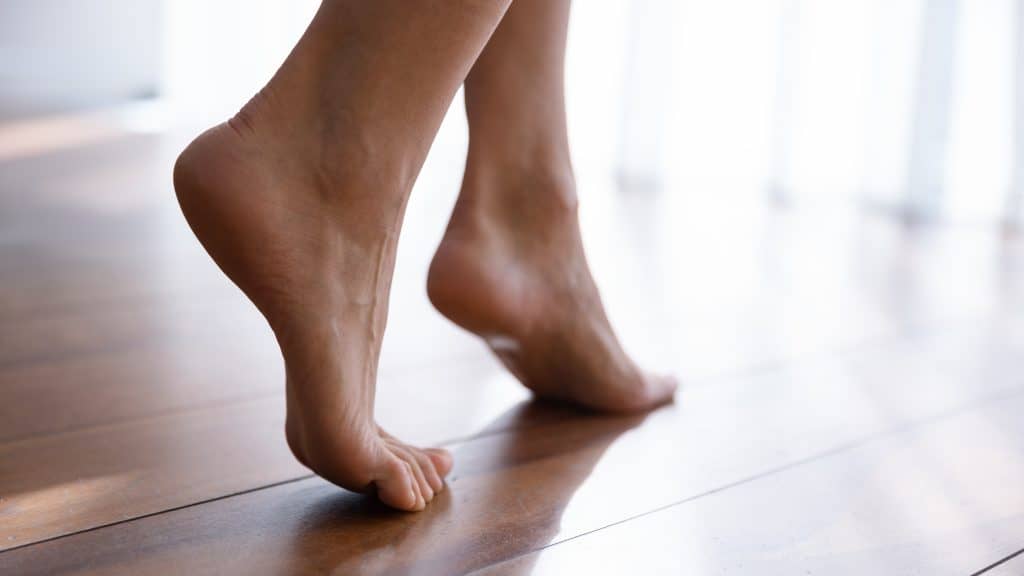
are two small bones near the big toe. You may get sesamoiditis when the surrounding tendons become injured or inflamed. It is a form of tendinitis that is common in runners and dancers.
To treat it:
- Rest
- Ice
- Wear a foot pad under the toe in a comfortable shoe.
- Tape the big toe to immobilize the joint and allow for healing.
- Wear low-heeled shoes.
- Ask your doctor about steroid injections.
Bunion
Bunions are bony, and tend to bulge along the edge of our feet next to the base of the big toe. It is caused by misalignment of the joint in the big toe. Uncomfortable shoes can cause bunions, and anyone can get them. Try switching shoes fiesta dn if there is still pain present then you may need to talk to your doctor about surgery.
Hammer Toe
Hammertoe occurs when the 2nd, 3rd, and 4th toe become bent at the middle joint. This created a hammer-like appearance. This may occur from muscular imbalances and ill-fitting shoes. Your doctor may recommend wearing wide, deep toe shoes. You may also talk with your doctor about surgery.
Claw Toe
Claw toe occurs when the toe points up or down and is unable to straighten. This condition is often the result of nerve damage caused by diabetes or heavy alcohol use. The muscles in the foot weaken as a result of this, and it is recommended that you wear special footwear to prevent irritation and calluses.
To treat it:
- Change to better-fitting footwear
- Avoid high heels and tight shoes
- Do stretches for your toes and toe joints
- Try shoe inserts
- Ask your doctor about surgery
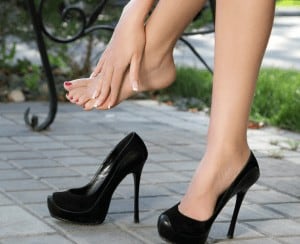
Bunionette – Tailors Bunion
Pain on the Foot’s Outer Edge
The fifth metatarsal bone, or the outer edge is commonly broken bone in the foot. Pain, swelling, and bruising along the outer foot edge are the most common symptoms. See your doctor if you think you have a broken bone.
To treat it:
- Take pain relievers such as NSAIDs
- Rest, ice, and elevate your foot
- Don’t walk on it
- Ask your doctor if surgery is necessary
- A cast may be necessary in some circumstances
Neuropathy
Foot Pain That’s Anywhere or Everywhere
Neuropathy, or nerve damage in the feet is most often caused by diabetes. Pain can be burning, stinging, or feelings of electricity in the area. It may occur anywhere in the feet. Consult your physician if you suspect neuropathy.
Tendonitis
Tendinitis is inflammation that occurs in the tendons, which are the bands that attach muscles to bones. Tendons are present in the surfaces of the feet and can cause foot pain in different spots.
To treat it:
- Rest your foot
- Take pain relievers such as NSAIDs
- Steroid injections
- Surgery is rarely needed
Can weight loss help reduce ball of foot pain?
Of course! Excess weight puts pressure on the lower half of the body especially the ball of foot pain which can exacerbate pain and discomfort. By losing the weight, the pressure put on your ball of foot will be elevated, which will allow it to function properly and avoid all the pressure. This way you will no longer experience from pain, can take part in exercises and stretching and walk normally with no worries.
Can high heels cause ball of foot pain?
Unfortunately yes, wearing high heels shifts your body weight forward which just like excess weights puts a lot of pressure on both legs and ball of foot resulting in pain, discomfort and inflammation. It can even leaf to conditions such as metatarsalgia, bunions, or Morton’s neuroma. Since high heels lack adequate proper cushioning and support, which further increases the risks of many feet related conditions. Which might be one reason women are more likely to develop ball of foot pain than men.
When should I see a doctor for ball of foot pain?
Consider seeing a doctor if you experience or notice any of the following signs:
- The pain is severe or persistent
- The pain makes it hard for you to walk, and more daily activities
- You ate noticing swelling, redness and warmth from the injured area
- There are no improvements with home remedies and methods like ice, rest and heat therapy.
- You notice numbness and tingling
- Its hard to bear the pain on the affected foot even when just standing
- You suspect an injury like fracture on sprain
- It’s been too long and you haven’t take the treatment because you expected it to go away on it’s own
- You are experiencing visible deformities such as bunions and hammertoes instead if improvement
Arch Pain
The most common cause of arch pain is plantar fasciitis. This condition can affect the heel and foot. Treatments are the same for each location of pain.
Flat feet, also known as fallen arches, occur when the arches of the feet flatten out and cause pain or other issues. It can be treated with shoe inserts, rest, ice, walking canes, braces, physical therapy, or surgery.

Toe Pain
Gout is a form of arthritis that occurs from crystals collecting in the toe joints, which causes severe pain and swelling. The big toe is the common area affected.
To treat it:
- Rest
- Take medication prescribed by your doctor
- Avoid foods that can make gout worse

